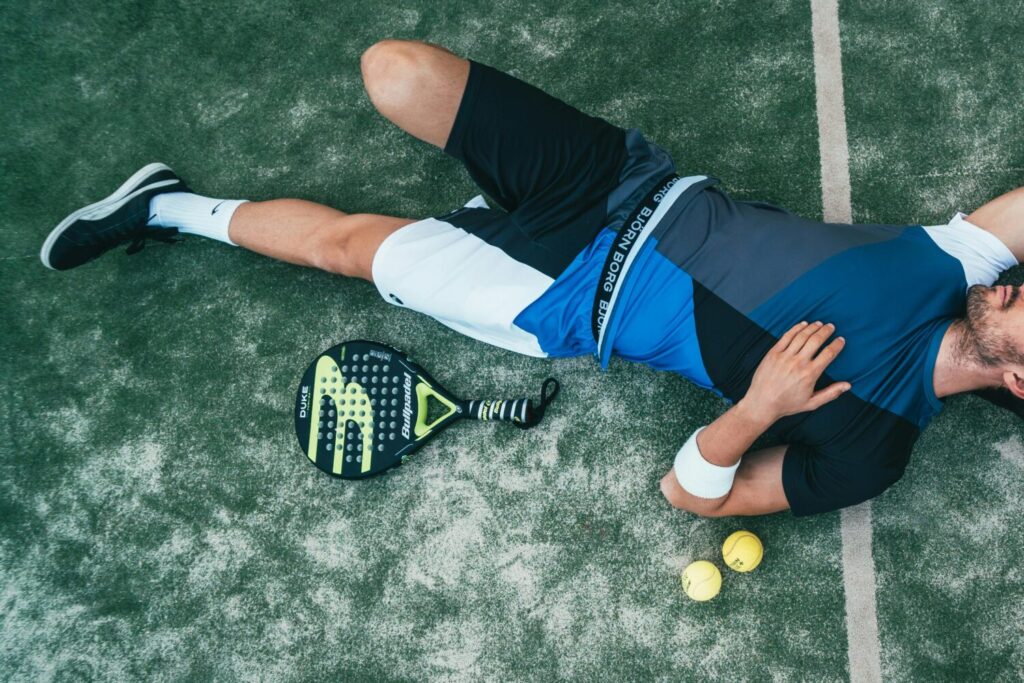A Proactive Thought to Prevent a Hamstring Injury:

The Thanksgiving friendly football game. Morning of, you plan a friendly game of rough touch Thanksgiving football. You step out on the cold field and begin to warm up. As you joke with your friends and family, you feel ready, you did your stretches! It’s GaMe TiMe! Your team lines up across the friendly opposition. The QB screams hike, you sprint 20 yards and cut across the field. You blow by the guy, covering you. The QB sees you open, hits you with the ball and you turn up field. You’re all alone heading for the end zone! 30, 25, 20, 15! WHOA!!! You feel something pull in the back of your leg. You hobble into the end zone and score but you’re down and out for the rest of the game. Worse, you realize this will probably bother you for a while.
Hamstring injuries occur frequently among recreational and elite athletes. It occurs most often in sports involving sprinting, turning and jumping. For any person who has experienced a hamstring injury, it can be a nagging injury. Not only physically but mentally as well, causing a person to hesitate sprinting at full speed, for fear of the unexpected pull.
The Hamstring: ( a quick analysis of the muscle, )
The Hamstring muscle (the back of your thigh) consists of 3 muscles: biceps femoris, semitendinosus, and semimembranosus. The hamstring primarily flexes the knee and extends the hip (kick backwards). The biceps femoris has two heads, the short and long head, which have different origins (the fixed attachment) and two different nerve innervations, which may cause asynchrony (not communicating or working well together). A muscle which is out of sync causes imbalances which opens the doors for injury.
There is a lack of research in preventative techniques for hamstring pulls. However, if you observe sports teams with various professional trainers and doctors, the more experienced and knowledgeable the staff the greater the chance of prevention. Today we will share the 3 important factors which should significantly reduce your
Inadequate hamstring strength:
For the body to be able to complete a movement, it must have balance among its major muscle groups. Just as the biceps are the star of the show over its opposing triceps muscle group, the quads are generally more popular than their opposing hamstring muscle group. Often, exercise programs have a specific to the quadriceps than the hamstring muscle group. No matter the sport or the activity, if one muscle group is much stronger than its opposing muscle group the person will not be able to unleash the muscle’s greatest potential action. When you run, the leg you push off the ground with is activating the quadriceps muscle, however, your hamstring stabilizes the action! Then as the leg lands (and the opposite is ready to push off) the hamstring is activated to allow the leg to reload. If the hamstring can’t handle the force of the push off an injury is inevitable. Think of the Shaquille O’Neal playing tug of war Justin Bieber. If Shaq decides to pull with all of his force, Bieber, will most likely be taken off his feet and pulled across the floor. However, if John and Sal, who are evenly matches strength wise, have a tug of war competition. Most likely no one will be pulled across the room.
The performance take away: If you don’t want your quads (shaq) rip your hamstrings (Bieber) when you apply full force to them, then make sure to develop your muscle groups evenly!
Poor hamstring flexibility/reduced range of motion:
Full body power is only possible if the body moves through a full range of motion. In sports, whether recreational or competitive, the body moves by reacting to the situation it’s in. If the football is thrown to you, whether you have flexible hamstring or the ability to move through the full range of the muscle, your body in that fight or flight situation will push through its limit. Pushing it past that limit will cause muscles to compensate. Compensation leads to a muscular imbalance, which you guessed it, leads to injury!
The performance Take away: Perform the full range of motion when working out! It sounds obvious but I can promise you it is often overlooked. Don’t let your ego get in the way! If you can’t complete the full range of motion in an exercise then you’re probably using too much weight. If you aren’t sure where full range of motion begins and ends ask a qualified strength and conditioning specialist (or better, contact training aspects ).
Improper warm up techniques:
The main components of a warm up, increase the blood flow to the muscles of the body and increase your heart rate to “warm up” the muscles, increase lubrication in the joints. With that said, if your warm up doesn’t reflect the movements you’re going to perform in the game/competition, you did not properly warm up.
The training performance summary:
Warm ups are too often based on stretching by holding a position such as touching your toes. The warm up you perform must reflect the activity you’re about to take part in. Touching your toes for 45seconds-1min will not warm you up properly before you sprint 100 yards, A dynamic warm up (stretching the muscle through a full range of motion) that includes similar movements you are about to perform at a controlled pace are very important. Then before you sprint at 100% of your ability, do a couple sprints at 50% then a couple at 60% then a couple at 70% and so on, until you feel you can take it to your maximum speed.
The hamstrings are a very important muscle group and are often overlooked. Once the hamstring is injured it could set you back not only physically but mentally, as well. Rehabbing an injured hamstring can be a tedious process, but worse, statistically there is a greater chance of re-occurrence. Instead! follow some of the basic tips shared today and decrease your chances of injury!
Written By: Kirill Vaks
Fitness Specialist
BA,CSCS,ACSM-cpt,NFPT-sns
Suggested Video:
Take action… Now!
Training Aspects Personal Training and Sports Performance:
Visit us:
Inside of the Flyers Training Center
601 Laurel Oak Rd.
Voorhees, NJ 08043
View Larger Map
Training Aspects’ personal trainers and sports performance coaches want you to accomplish your goals. You, as the personal training client, are a reflection of our personal training and group training methods! We are here to help you accomplish all of your personal training goals! Our main training focus are people looking to increase performance, lose weight , lose body fat and increase lean muscle. Whether you live in Cherry Hill, Haddonfield,Marlton, or any of the other surrounding areas we are here to help you Move, Look and feel as you’ve always desired…



